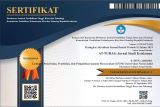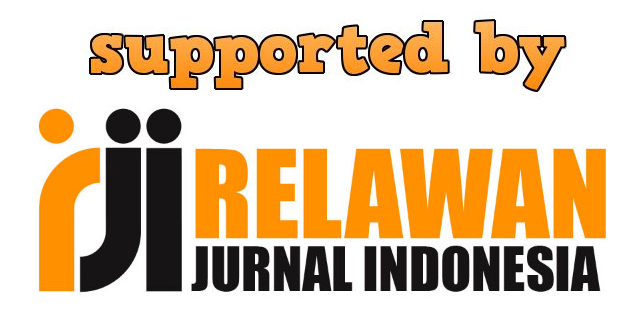Abubakar, S. F. (2023). Metode Kritik Sanad (Naqd Al-Sanad). Ihyaussunna, 3.
Ad-Dinawar, A. bin I. bin B. ’Amal Al-Yaum wa Al-Lailah li Ibni Sunni. Beirut: Dar Al-Qiblah li Ats-Tsaqafah Al-Islamiyah wa Mu’assasah Ulum Al-Qur’an.
Al-Baihaqi, A. B. A. bin H. bin A. (2011). Al-Sunan Al-Kubro Baihaqi. (A. bin A. M. Al-Tarky, Ed.) (1st ed., Vol. 1). Kairo: Markaz Dirasah al-Arabiyah al-Islamiah.
Al-Bukhori, M. ibn I. (1994). Shahih al-Bukhori. (M. D. al-Bugha, Ed.) (7th ed., Vol. 3). Damaskus: Dar Ibn Katsir.
Al Hasan, I. B. A. (2003). Syarah Shahih al-Bukhori Ibnu Baththal. (A. T. Y. bin Ibrahim, Ed.) (2nd ed., Vol. 9). Riyadh: Maktab al-Rasyd.
Ali, A. Y. bin A. (1984). Musnad Abi Ya’la. (H. S. Asad, Ed.) (Vol. 6). Damaskus: Dar Al-Ma’mun Lit-Turats.
Al-Jauzi, A. bin M. Kasyful al-Musyukil. (A. H. Al-Bawab, Ed.) (Vol. 4). Al-Riyadh: Dar al-Wathan.
Al-Maliki, A.-Q. ’Iyadh A.-S. (1332). Masyariqul al-Anwar ala Shihah al-Atsar (Vol. 1). Maghreeb: Al-Maṭbaʿah Al-Mūlawiyyah.
Al-Munawi, M. A. R. (1359). Faidhul Qadir Syarh Al-Jami’ Ash-Shaghir (1st ed., Vol. 5). Mesir: Al-Maktabah At-Tijariyah Al-Kubra.
Al-Nasa’i, A. bin S. (2001). Al-Sunan Al-Kubra. (H. A. M. Syalbi, Ed.) (Vol. 8). Beirut: Muassasah Al-Risalah.
Al-Quzaini, M. bin Y. bin M. (2009). Sunan Ibn Majah. (Shu`ayb Al-Arna’ut, A. Murshid, M. K. Qarballi, & A. Harzullah, Eds.) (5th ed., Vol. 3). Mesir: Dar Al-Risalah Al-Alamiyah.
Al-Syahbani, M. al-D. I. al-A. (1979). Al-Nihayah Fi Gharib al-Hadis wa al-Atsar. (T. A. Al-Zawi & M. M. Al-Tonahi, Eds.) (Vol. 1). Beirut: Maktabah al-Ilmiyah.
Al-Zaman, Md. Sayeed. (2022). Social mediatization of religion: Islamic videos on YouTube. Heliyon, 3 (18), 1-2. https://doi.org/10.1016/j.heliyon.2022.e09083
Andesra, Aan. (2024). Resepsi Hadits pada Video Konten Akun Tiktok Aden Alfurqon. Istinarah: Riset Keagamaan, Sosial Dan Budaya, 6(1), 23–26. https://doi.org/10.31958/istinarah.v6i1.11897
Arafah, D. S. S., Fitriani, D. A., & Rahman, M. T. (2023). Mediatisasi Agama dan Penanaman Nilai Keagamaan Islam dan Kristen Melalui Media Sosial: Studi pada Kanal Youtube Superbook Indonesia dan Nussa Rara. Focus, 4(1), 28–29. https://doi.org/10.26593/focus.v4i1.6572
Campbell, A. Heidi. (2019). Contextualizing Current Digital Religion Research on Emerging Technologies. Wiley Journal, 2 (15), 17. https://doi.org/10.1002/hbe2.149
Friyadi, Arif. (2022). Romantisisme Rasulullah dalam Perspektif Hadis Riwayat Sayyidah ‘Aisyah ra. Aqwal: Journal of Qur’an and Hadis Studies, 3(2), 120. https://doi.org/10.28918/aqwal.v3i2.4228
Gaffar, Abdul. (2023). Resepsi Hadis pernikahan di Media Sosial. KURIOSITAS: Media Komunikasi Keagamaan Dan Sosial, 16(1), 1–2. https://doi.org/10.35905/kur.v15i1.5852
Gea, Dalmaisyah. (2022). Konsep Undian dalam Tafsir Rafiq Yunus Al Mishri (Qs. Ash-Shoffat: 141). Mubeza: Pemikiran Hukum dan Ekonomi Islam, 11(1). https://doi.org/10.54604/mbz.v11i1.55
Hanbal, I. A. bin. (2001). Musnad Imam Ahmad bin Hanbal. (Shu’aib Al-Arna’ut & ’Adil Murshid, Eds.) (Vol. 40). Beirut: Mu’assasah Ar-Risalah.
Harahap, N. (2020). Penelitian Kualitatif. (H. Sazali, Ed.) (1st ed.). Medan, Sumatra Utara: Wal Ashri Publishing.
Hibban, A. H. M. (2012). Shahih Ibnu Hibban. (M. A. Sonmez & H. A. Demir, Eds.) (Vol. 6). Beirut: Dar Ibnu Hazim.
Hjarvard, Stig. (2008). The Mediatization of Society. Nordicom Review, 2, 113. https://doi.org/10.1515/nor-2017-0181
Hjarvard, Stig. (2013). The Mediatization of Culture and Society. Routledge. https://doi.org/10.4324/9780203155363
Imtyas, Riziyatul. (2018). Metode Kritik Sanad dan Matan. Ushuluna: Jurnal Ilmu Ushuluddin, 4(1), 19. 10.15408/ushuluna.v1i1.15286
Jasinal, Rahmat. (2022). Otoritas Hadis di Media Sosial: Analisis Video-Video Hadis Dalam Platform Tiktok. Jurnal Dakwah Tabligh, 23(1). https://doi.org/10.24252/jdt.v23i1.29336
Luthfi, H. (2020). Model Penulisan Kitab Hadits. (M. Marfuah, Ed.) (Pertama). Jakarta Selatan: Rumah Fiqih Publishing.
Manurung, R. T., Victoriana, E., & Amadeus, A. E. (2021). Membangun Komunikasi Verbal Positif dalam Keluarga dengan Pengelolaan Emosi. Aksara: Jurnal Ilmu Pendidikan Nonformal, 7(3), 1339–1340. https://doi.org/10.37905/aksara.7.3.1339-1346.2021
Musdalifah, I., & Hadiati Salisah, N. (2022). Cyberdakwah: Tiktok Sebagai Media Baru. Komunida: Media Komunikasi Dan Dakwah, 12(2), 181–182. https://doi.org/10.35905/komunida.v12i2.2733
Muslim, A. H. bin M. bin A.-H. (1955). Shahih Muslim. (M. F. Abdul Baqi, Ed.) (Vol. 4). Beirut: Dar Ihya’ Turats.
Nahied, M. A., & Ubaidillah, R. (2024). Mediatisasi Hadis: Transformasi Interpretasi dalam Era Digital. Al-Manar: Jurnal Kajian Al-Qur’an Dan Hadits, 10(5), 87. https://doi.org/10.35719/amn.v10i1.66
Nasution, A. F. (2023). Metode Penelitian Kualitatif. (M. Albina, Ed.) (1st ed.). Bandung: CV. Harfa Creative.
Officialfiqihpernikahan. (2024, December 10). Kita Usahakan Rumah Tangga Harus Seindah Rumah Tangga Rasulullah Yuk!
Pangestu, P. P. (2021). Efektivitas Dakwah Hadis dalam Media Sosial: Analisis atas Teori Framing Robert N. Entman. Jurnal Dakwah Dan Komunikasi, 6(1), 6. https://doi.org/10.29240/jdk.v6i1.2958
Sari, Desi Kurnia., Suziana. S., Games. Donard. (2020). An evaluation of social media advertising for Muslim millennial parents. Journal of Islamic Marketing, 9 (12), 1836-1837. https://doi.org/10.1108/JIMA-02-2020-0055
Shari, Mira. Fitri. (2021). Bentuk Mediatisasi Hadis Berupa Video: Respon Netizen Terhadap Video Pendek Mengenai Hadis Di Aplikasi Tiktok. Jurnal Moderasi, 1(2), 169–170. https://doi.org/10.14421/jm.2021.12.04
Sholeh, M. (2019). Penulisan Kitab Hadis Tipologi Ajza’. Al-Thiqah, 2(1), 73–74.
Sholeh, Moh. Jufriyadi. (2020). Tipologi Kodifikasi Hadis-Hadis Nabi Muhammad Saw. Dirosat: Journal of Islamic Studies, 5(1), 103. 10.28944/dirosat.v5i1.923
Umroh, V. S. R. (2024). Mediatisasi Dakwah: Popularitas Kajian Halimah Alaydrus dan Umi Laila di Kalangan Generasi Z. Mutiara: Multidiciplinary Scientifict Journal, 2(12), 4-5. https://doi.org/10.57185/mutiara.v2i12.301
Wahid, S. Hasan. (2024). Exploring the intersection of Islam and digital technology: A bibliometric analysis. Social Sciences & Humanities Open, (14), 2-3. https://doi.org/10.1016/j.ssaho.2024.101085
 (UIN Sunan Ampel Surabaya)
(UIN Sunan Ampel Surabaya) 




.png)






